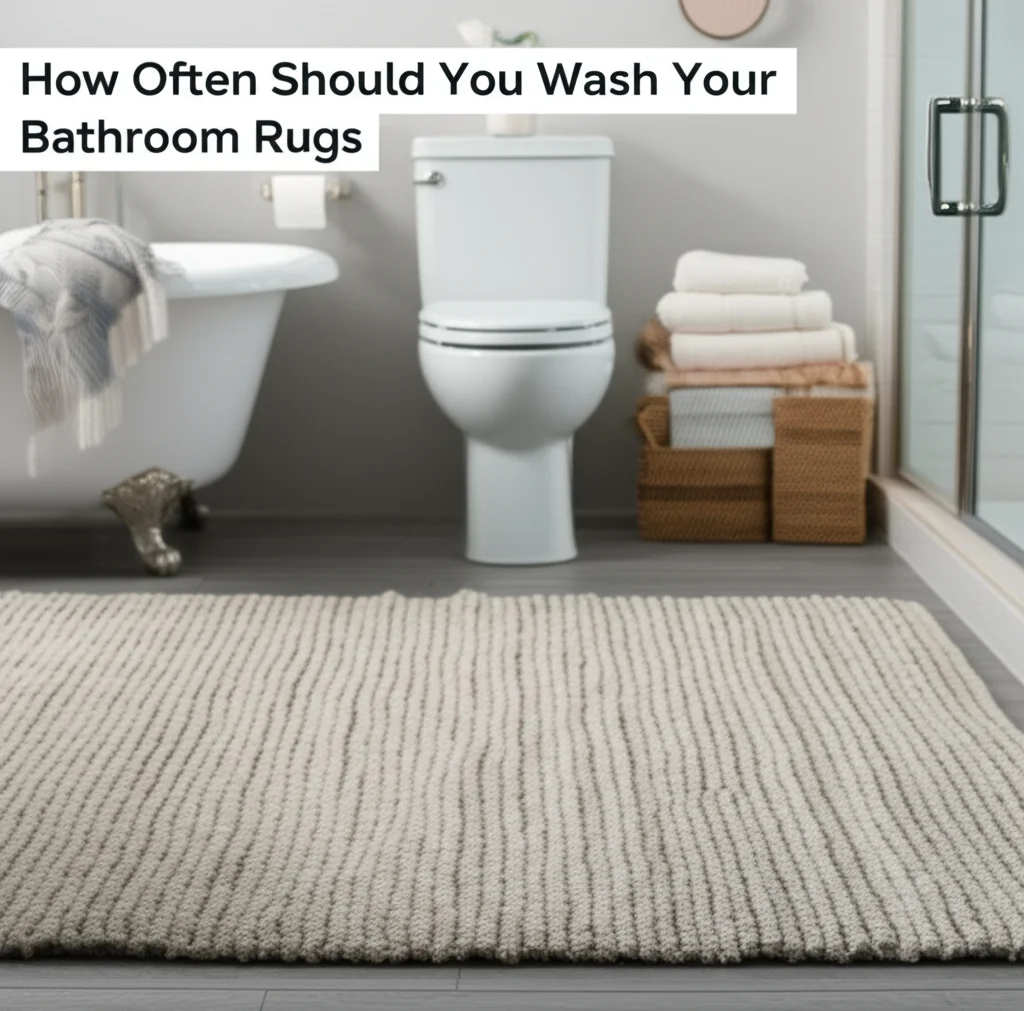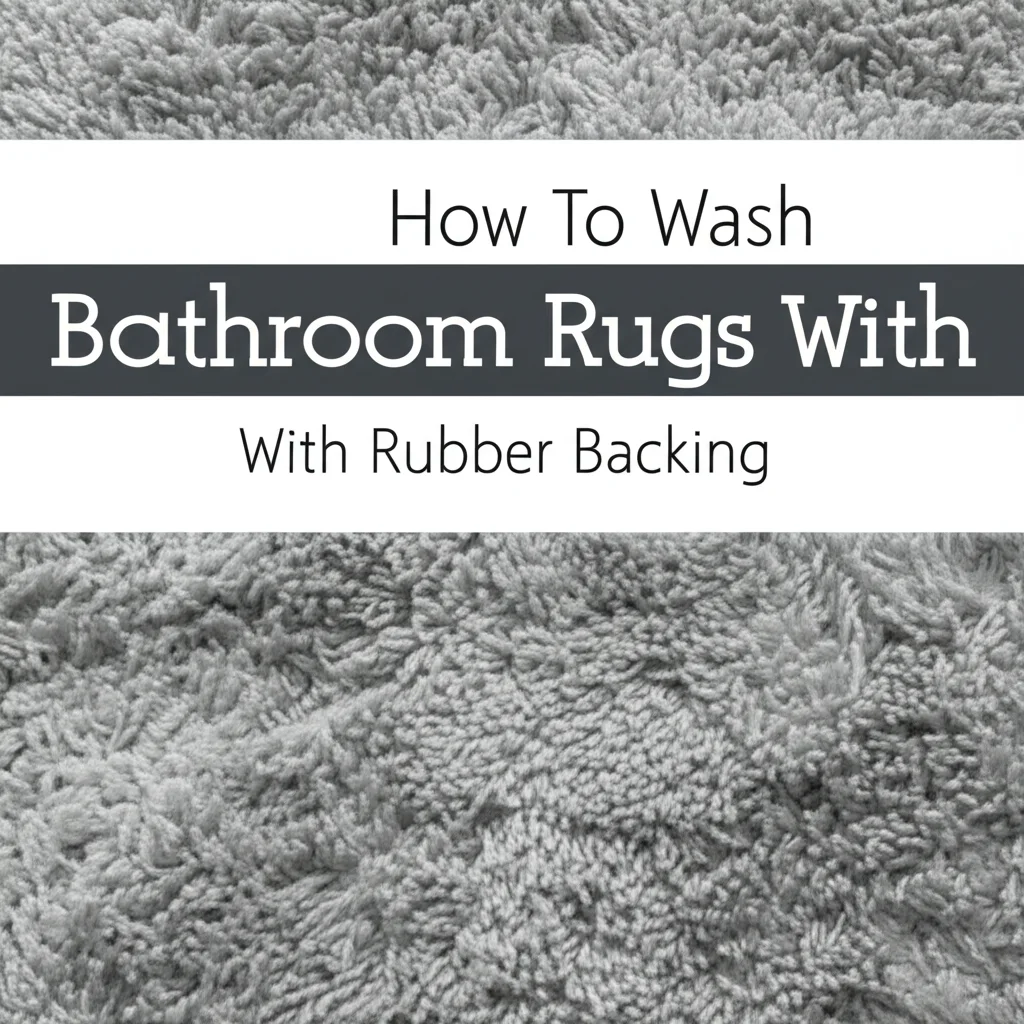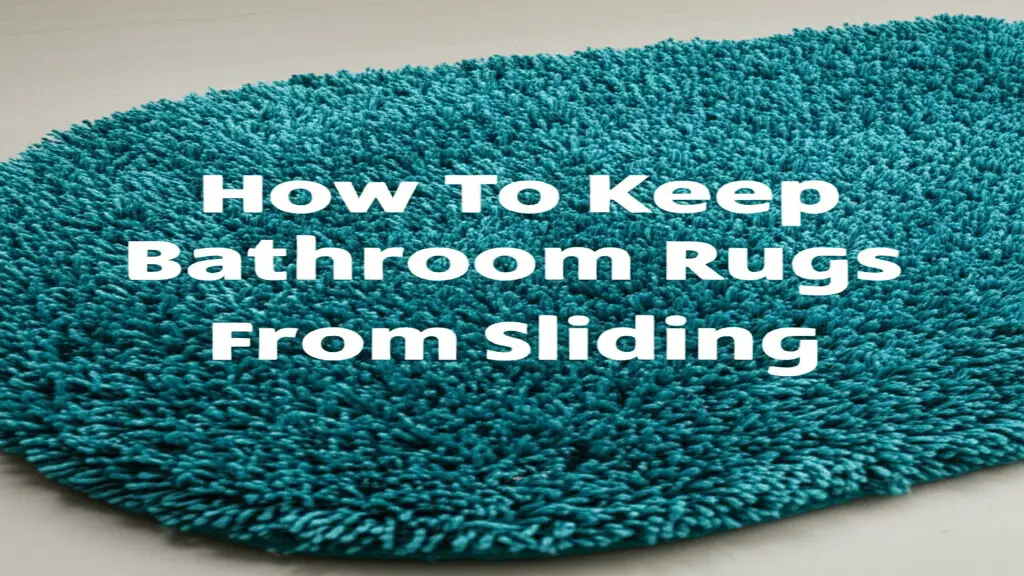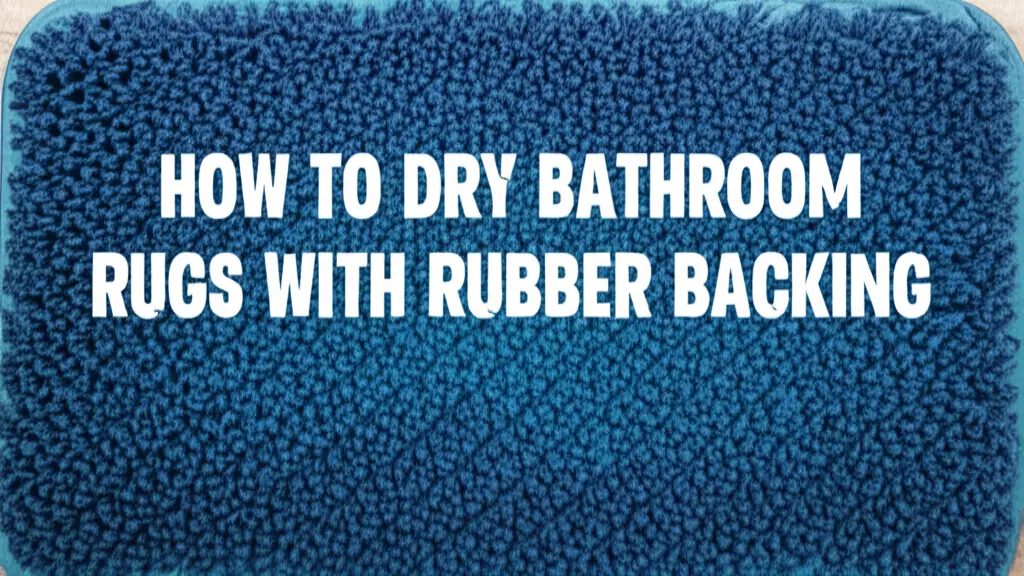· Todd Martin · Bathroom Cleaning · 12 min read
How Often Should You Wash Your Bathroom Rugs

How Often Should You Wash Your Bathroom Rugs: The Complete Guide
Introduction
Standing on a plush, comfortable bathroom rug after a shower is one of life’s simple pleasures—until you realize that same rug might be harboring millions of bacteria, mold spores, and skin cells. How often should you wash your bathroom rugs to maintain proper hygiene? This question puzzles many homeowners who want to balance cleanliness with convenience.
Bathroom rugs absorb water, collect hair, skin cells, and are exposed to high humidity environments daily, making them perfect breeding grounds for microorganisms. In this comprehensive guide, we’ll explore the ideal washing frequency for bathroom rugs, proper cleaning methods, and tips to extend their lifespan.
Key Takeaways
- Most bathroom rugs should be washed every 1-2 weeks
- Rugs in high-traffic bathrooms need more frequent washing
- Different rug materials require specific cleaning methods
- Rubber-backed rugs need special care to prevent damage
- Regular cleaning prevents mold, bacteria, and odors
In a nutshell: You should wash your bathroom rugs every one to two weeks, depending on how many people use your bathroom and the humidity level in your home. Households with children, pets, or people with allergies should wash bathroom rugs weekly.
Why Regular Washing of Bathroom Rugs Is Essential
Your bathroom rug might look clean on the surface, but what lurks beneath can be concerning. Bathroom rugs absorb moisture every time you step out of the shower or bath, creating the perfect environment for bacteria and mold growth. According to microbiologists, a damp bathroom rug can harbor millions of bacteria per square inch, many of which can cause skin irritations or infections.
Regular washing of bathroom rugs isn’t just about aesthetics—it’s about health. Mold and mildew thrive in damp environments, and their spores can trigger allergic reactions and respiratory issues, especially in people with asthma or compromised immune systems. Additionally, dust mites—microscopic creatures that feed on dead skin cells—can multiply rapidly in unwashed bathroom rugs.
Environmental factors play a significant role in determining how quickly your bathroom rugs become breeding grounds for microorganisms:
- High humidity levels accelerate mold and mildew growth
- Poor ventilation prevents rugs from drying properly between uses
- Shared bathrooms expose rugs to more foot traffic and bacteria
- Warm bathroom temperatures create ideal conditions for bacterial growth
Beyond health concerns, regularly washing your bathroom rugs extends their lifespan. Dirt and grime can break down rug fibers over time, causing premature wear and tear. By maintaining a consistent cleaning schedule, you’ll not only create a healthier bathroom environment but also protect your investment in quality bathroom textiles.
For those concerned about how to wash bathroom rugs with rubber backing, special care is needed to prevent the backing from cracking or peeling, which we’ll cover in detail later in this article.
How Often Should You Wash Your Bathroom Rugs?
The question of washing frequency isn’t one-size-fits-all. Several factors influence how often your bathroom rugs need cleaning:
Factors Affecting Washing Frequency
Bathroom usage: The more people using a bathroom, the more frequently its rugs need washing. A guest bathroom used occasionally might need cleaning just once a month, while the family bathroom used by four people daily requires weekly washing.
Humidity levels: Bathrooms with poor ventilation retain moisture longer, creating ideal conditions for mold growth. If your bathroom stays damp for hours after showering, consider washing rugs more frequently.
Health considerations: Households with allergy sufferers, young children, elderly individuals, or immunocompromised persons should maintain stricter cleaning schedules—typically washing bathroom rugs weekly.
Presence of pets: If your furry friends frequent the bathroom, hair, dander, and occasional accidents mean your rugs need more frequent washing.
Visible soiling: Discoloration, visible dirt, or detectable odors are clear signs that immediate washing is needed, regardless of your regular schedule.
General Guidelines for Washing Frequency
Based on these factors, here’s a practical guide to bathroom rug washing frequency:
- High-traffic family bathrooms: Wash every 7-10 days
- Master bathrooms (1-2 users): Every 10-14 days
- Guest bathrooms (occasional use): Every 3-4 weeks
- Households with allergies or health concerns: Weekly
- Homes with young children or pets: Weekly or as needed when soiled
A Reddit thread on how often to wash bath mats revealed interesting insights from real users. While responses varied widely, most users agreed that two weeks is the maximum time between washes for regularly used bathroom rugs, with many preferring weekly washing for optimal freshness.
Remember that these are general guidelines. Your specific situation might require adjustments. When in doubt, it’s better to wash more frequently than less, especially in humid environments where mold can develop quickly.
How to Properly Wash Different Types of Bathroom Rugs
Not all bathroom rugs are created equal. Different materials require specific washing methods to ensure thorough cleaning without damaging the rug.
Cotton and Synthetic Fiber Rugs
Most cotton and synthetic bathroom rugs are machine-washable, making them the most convenient option for busy households.
Washing instructions:
- Check the care label for specific temperature recommendations
- Use mild detergent without bleach or fabric softeners
- Wash in warm water on a gentle cycle
- For heavily soiled rugs, pre-treat stains before washing
- Avoid washing with lint-producing items like towels
Cotton rugs can typically withstand higher temperatures, which help kill bacteria and dust mites. However, hot water may cause some synthetic fibers to shrink or warp, so always check the manufacturer’s recommendations.
Rubber-Backed Bathroom Rugs
Many bathroom rugs feature rubber backing to prevent slipping on wet floors. These require special care to prevent the backing from cracking, peeling, or separating from the fabric.
Washing instructions:
- Use cold or lukewarm water only (hot water damages rubber)
- Select the gentle or delicate cycle
- Use mild detergent without bleach
- Wash similar items together to prevent overloading
- Air dry completely before using again
For more detailed information on preserving rubber backing, visit our guide on how to wash bathroom mats in washer.
Microfiber and Memory Foam Mats
These ultra-absorbent options have gained popularity for their comfort and quick-drying properties.
Washing instructions:
- Wash in cold water on gentle cycle
- Use small amount of mild detergent
- Avoid fabric softeners which reduce absorbency
- Do not bleach
- Air dry or tumble dry on lowest setting
Memory foam mats can lose their cushioning with improper washing, so handle with extra care and avoid wringing them out.
Natural Fiber Rugs (Bamboo, Jute, Sisal)
These eco-friendly options require special attention:
Cleaning instructions:
- Check if machine washable (many are not)
- For non-washable rugs, vacuum regularly
- Spot clean stains immediately
- Professional cleaning recommended for deep cleaning
- Ensure complete drying to prevent mold growth
For specific guidance on bamboo options, see our article on how to clean bamboo rugs.
Luxury Bath Mats (Wool, Chenille)
Higher-end bathroom rugs may require gentle handling:
Washing instructions:
- Hand washing recommended for wool rugs
- If machine washing, use wool cycle and wool-safe detergent
- Cold water only
- Never wring or twist
- Lay flat to dry
For wool rug maintenance beyond bathroom use, our guide on how to clean wool rugs provides comprehensive care instructions.
Drying and Maintaining Your Bathroom Rugs
Proper drying is as important as proper washing when it comes to bathroom rug care. Incomplete drying can lead to mildew growth and unpleasant odors.
Drying Methods
Air drying:
- Hang rubber-backed rugs over a shower rod or clothesline
- Ensure rubber side faces outward to allow fabric to dry
- Choose a well-ventilated area
- Avoid direct sunlight for extended periods (can degrade rubber backing)
Machine drying:
- Use low heat only
- Add clean tennis balls or dryer balls to help maintain fluffiness
- Remove promptly when dry to prevent wrinkles
- Check rubber backing periodically during drying to prevent overheating
For specific guidance on drying rubber-backed options, check out our article on how to dry bathroom rugs with rubber backing.
Between-Wash Maintenance
To extend time between washings:
- Hang bathroom rugs after showers to allow moisture to evaporate
- Use bathroom fans for 30 minutes after showering to reduce humidity
- Shake rugs outdoors weekly to remove loose debris
- Vacuum regularly using a low-suction setting
- Address spills and stains immediately
When to Replace Bathroom Rugs
Even with proper care, bathroom rugs don’t last forever. Signs it’s time for replacement include:
- Persistent odors despite thorough washing
- Visible mold or mildew that won’t wash out
- Cracked, peeling, or deteriorating rubber backing
- Worn, frayed, or thinning fabric
- Faded or discolored appearance
Most quality bathroom rugs last 1-2 years with proper care, though cheaper options may need replacement sooner. Rotating multiple sets of bathroom rugs can extend their useful life.
Special Considerations for Different Bathroom Situations
Bathroom configurations and usage patterns vary widely, requiring tailored approaches to rug maintenance.
Small Bathrooms with Poor Ventilation
Small bathrooms present unique challenges for rug maintenance:
- Moisture evaporates more slowly, increasing mold risk
- Install a bathroom fan if possible
- Consider using a dehumidifier
- Choose quick-drying synthetic or microfiber rugs
- Wash rugs weekly due to higher humidity
- Remove rugs from floor when showering in extremely small spaces
Large Family Bathrooms
High-traffic bathrooms serving multiple family members require strategic approaches:
- Invest in multiple sets of rugs to rotate while washing
- Consider darker colors or patterns that hide soiling between washes
- Place smaller, washable rugs in high-traffic areas
- Establish a fixed weekly washing schedule
- Assign rug washing responsibilities as part of family chores
Bathrooms Used by People with Allergies or Asthma
For sensitive individuals, bathroom rug hygiene is especially important:
- Wash rugs weekly without exception
- Use hot water (when material allows) to kill dust mites
- Consider 100% cotton rugs without rubber backing
- Dry thoroughly on high heat when possible
- Vacuum with HEPA filter between washings
- Consider antimicrobial rug options
Guest Bathrooms
Less frequently used spaces have different requirements:
- Wash before guest arrivals regardless of regular schedule
- Choose easily washable options for convenience
- Consider removing rugs when bathrooms won’t be used for extended periods
- Air out the bathroom and rugs periodically even when not in use
For more bathroom cleaning guidance beyond just rugs, see our comprehensive guide on how often should you clean your bathroom.
Eco-Friendly and Efficient Bathroom Rug Washing Tips
Maintaining clean bathroom rugs doesn’t have to harm the environment or consume excessive resources.
Environmentally Conscious Washing Methods
Water conservation:
- Wash bathroom rugs with other similar items to fill the machine efficiently
- Use cold water when possible
- Select water-saving cycles on your washing machine
Eco-friendly detergents:
- Choose plant-based or biodegradable detergents
- Use vinegar as a natural fabric softener and odor remover
- Consider soap nuts as a natural detergent alternative
Energy-efficient drying:
- Air dry when weather permits
- Use dryer balls to reduce drying time when machine drying
- Clean lint filters before each use to improve efficiency
Natural Cleaning Solutions for Stain Removal
For spot treating stains before washing:
- Baking soda paste: Works on soap scum and general discoloration
- Hydrogen peroxide: Effective on organic stains (dilute for colored rugs)
- White vinegar solution: Combats mildew and mineral deposits
- Enzyme cleaners: Best for biological stains
Always test natural cleaners on an inconspicuous area first to ensure colorfastness.
Reducing Bathroom Rug Washing Frequency Safely
To maximize time between washes without compromising hygiene:
- Use a squeegee on shower doors and walls to reduce overall bathroom humidity
- Install proper ventilation systems that vent to the outside
- Leave bathroom doors open when possible to improve air circulation
- Consider a washable bath mat used over your decorative bathroom rug for additional protection
- Implement a no-outdoor-shoes policy in bathrooms
FAQ: Common Questions About Washing Bathroom Rugs
Are you supposed to wash bathroom rugs?
Yes, absolutely. Regular washing of bathroom rugs is essential for proper hygiene. Bathroom rugs absorb moisture and collect skin cells, hair, and bacteria daily. Washing removes these contaminants and prevents mold, mildew, and odor development. Unwashed bathroom rugs can harbor harmful microorganisms that may cause skin irritations or trigger allergies.
How often should you change your bathroom rug?
Most quality bathroom rugs should be replaced every 1-2 years, depending on use and care. Signs it’s time for replacement include visible wear, persistent odors despite washing, deteriorating rubber backing, or visible mold that won’t wash out. Rotating multiple sets can extend their useful life and ensure you always have a clean option available.
What is the best cycle to wash bathroom rugs?
For most bathroom rugs, the gentle or delicate cycle is ideal. This provides sufficient cleaning while minimizing damage to fibers and rubber backing. Use cold water for rubber-backed rugs to prevent deterioration of the backing. Cotton rugs without rubber backing can typically handle a normal cycle with warm water for more thorough sanitizing.
Can you wash bath mats with towels?
It’s generally not recommended to wash bath mats with towels. Towels can release lint that sticks to bathroom rugs, especially those with rubber backing or plusher materials. Additionally, heavy bath mats may impact the cleaning effectiveness for lighter towels. For best results, wash bathroom rugs with similar items or alone.
How do you clean bathroom rugs that can’t go in the washer?
For non-machine washable bathroom rugs, regular maintenance includes:
- Vacuuming with a low-suction attachment
- Spot cleaning stains immediately with appropriate cleaners
- Occasional steam cleaning for deeper sanitizing
- Hanging outdoors in sunlight to naturally disinfect
- Professional cleaning for expensive natural fiber rugs
How can I prevent mold growth on my bathroom rugs?
Prevent mold by ensuring rugs dry completely between uses by:
- Installing and using bathroom exhaust fans during and after showers
- Hanging rugs to dry when extremely wet
- Using a bathmat on top of decorative rugs to absorb initial moisture
- Choosing synthetic materials that dry faster than natural fibers
- Washing regularly with vinegar added to detergent for mold prevention
Final Words
Maintaining clean bathroom rugs is an essential aspect of overall home hygiene that often gets overlooked. By washing your bathroom rugs every one to two weeks—more frequently for high-traffic bathrooms or households with special considerations—you’ll create a healthier environment while extending the life of your bathroom textiles. Remember that different materials require specific care approaches, particularly for rubber-backed options that need gentle handling to preserve their non-slip functionality.
Establishing a regular bathroom rug washing routine might seem like yet another household chore, but the benefits far outweigh the effort. Clean bathroom rugs not only look and smell better but also reduce allergens, prevent mold growth, and eliminate bacteria that could affect your family’s health. With the guidelines provided in this article, you can develop an efficient cleaning schedule that keeps your bathroom rugs fresh without unnecessary wear and tear.
Take a moment to evaluate your current bathroom rug cleaning habits and consider implementing the recommendations that apply to your specific situation. Your bathroom will be a cleaner, healthier space for it—and your feet will thank you for the freshly laundered softness beneath them after every shower or bath.





